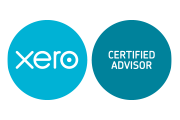There are four Capital Gains concessions that may apply to reduce the capital gains tax (CGT) where a small business is sold on or after 21 September 1999.
These are:
. The 15 year exemption
. The 50% reduction
. The retirement concession
. Rollover relief
For a business to qualify for any of the above it must meet the basic conditions as noted below:
The entity
- is a small business entity for the year in which the CGT event occurs being a business which satisfies the $2m aggregate turnover test, or
- satisfies the maximum $6m net asset value test, or
- is a partnership that is a small business for the income year and the CGT asset is an asset of the partnership, or
- satisfies the asset ownership and use requirements
- the CGT asset must satisfy the active asset test, and
Where the asset is a share in a company or interest in a trust, one of the following two conditions must be met:
- the entity claiming the concession must be a CGT concession stakeholder in the object company or trust just before the CGT event, or
- the CGT concession stakeholders must together have a small business participation percentage of at least 90% in the entity claiming the concession just before the CGT event.
The 15 year exemption
A taxpayer can disregard a capital gain arising from a CGT event in relation to a CGT asset that it has owned for at least 15 years if:
. the basic conditions above are met, and
. the entity continuously owned the asset for 15 years before the CGT event, and
. if the entity is an individual, the individual retires (must be 55 years or older) or is permanently incapacitated, or
. if the individual is a company or trust, the entity had a significant individual (hold at least a 20% participation percentage) for a total for at least 15 years throughout its period of ownership and the individual who was the significant individual just before the CGT event retires or is permanently incapacitated. The 15 year period does not have to be continuous and the significant individual does not have to be the same significant individual during that 15 year period.
Where the 15 year exemption applies, there is no need to apply the other three exemptions.
The 50% Reduction
If the entity does not qualify for the 15 year exemption but still meets the basic conditions, the capital gain can be reduced by 50%. Current year & prior year capital losses must be applied first before applying the 50% reduction. This capital gain may be further reduced by applying the small business retirement exemption or small business rollover or both. You may also choose which order to apply these concessions.
The Retirement Concession
A taxpayer may be able to claim an exemption up to a maximum capital gain of $500,000 where the capital proceeds of a small business are used for retirement - although it is not necessary to retire. The capital gain may be disregarded where the basic conditions are met and, also other conditions depending upon whether the capital gain is made by an individual, company or trust.
Individuals
An individual can apply the retirement exemption if:
. The basic conditions are met
. the taxpayer makes a written election which specifies the amount the taxpayer chooses to disregard (the CGT exempt amount), and
. where the taxpayer is aged 55 or older there is no requirement to pay an amount into a complying superannuation fund. Where the taxpayer is under 55 the CGT exempt amount must be rolled into a complying superannuation fund.
Companies and Trusts
Broadley, a company or trust can also choose to disregard an amount under the retirement exemption if:
. the basic conditions are met
. the entity satisfies the significant individual test
. the entity makes a written choice to apply the exemption and each CGT stakeholder's percentage of the exempt amount
. the entity makes a payment of any capital gain exempted under the retirement exemption to CGT concession stakeholders by the later of seven days after the choice is made by the entity to disregard the capital gain, or seven days after an amount of capital proceeds is received by the CGT concession stakeholder. The payment must be calculated by reference to each individual's percentage of the exempt amount, and
. if the CGT concession stakeholders is under 55 before the payment is made it must be made to a complying superannuation fund.
The $500,000 cap for the exempt retirement exemption amount is per each individual, hence if there were 3 concessional stakeholders the total exempt amount would be $1,500,000.
Rollover Relief
A taxpayer may claim rollover relief of the capital gains by acquiring one or more replacement assets if done within the replacement asset period. The replacement asset period is one year before and ending two years after the last CGT event in the income year for which the taxpayer obtains the rollover.
To obtain the rollover, the basic conditions must be met and the replacement asset must be an active asset at the end of the replacement period. Where the replacement asset is a share in a company or trust the taxpayer must be a concession stakeholder in the entity, or the CGT concession stakeholder must have a participation percentage in the small business entity of at least 90%.
The rollover relief may be applied typically in circumstances where a business is sold and another business is acquired within the replacement asset period.




